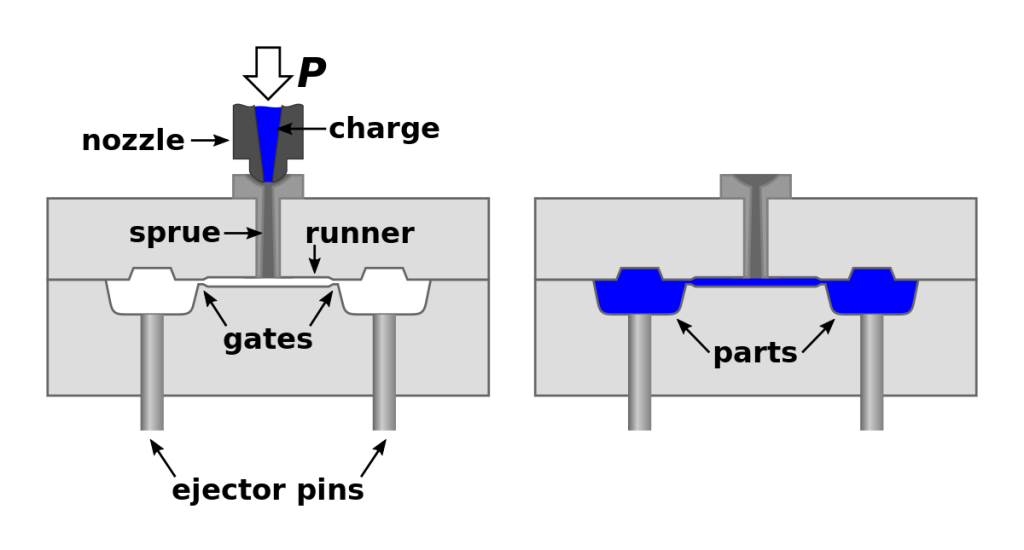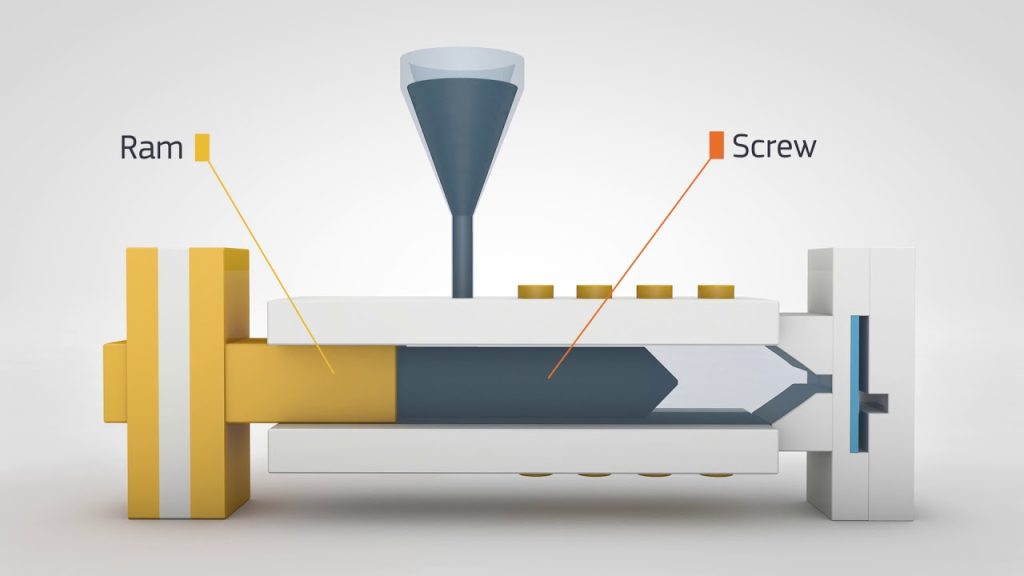Table of Contents
- Calculating Power Consumption in Injection Molding Machines
- Frequently Asked Questions
- How is power consumption measured in an injection molding machine?
- What factors affect power consumption in an injection molding machine?
- How can power consumption be reduced in an injection molding machine?
- Why is it important to reduce power consumption in an injection molding machine?
- What are some common misconceptions about power consumption in injection molding machines?
Have you ever wondered how much power your injection molding machine consumes? Understanding power consumption is crucial for manufacturers looking to optimize their production costs and reduce their carbon footprint. In this article, we’ll explore how to calculate power consumption in injection molding machines and provide tips on how to minimize energy usage without compromising on quality. Whether you’re a seasoned injection molder or just starting out, this guide will help you make informed decisions that benefit both your business and the environment.
- Find the wattage rating of the injection molding machine’s motor. This information can usually be found on the machine’s nameplate or in the user manual.
- Multiply the wattage rating by the number of hours the machine will be in use each day. This will give you the daily power consumption in watt-hours (Wh).
- To convert watt-hours to kilowatt-hours (kWh), divide the total Wh by 1000.
- Finally, multiply the total kWh by the cost of electricity per kWh to get the daily power cost of the injection molding machine.
Calculating Power Consumption in Injection Molding Machines
Injection molding is a widely used manufacturing process that involves the use of an injection molding machine to create parts and products for various industries. One important aspect of this process is power consumption. Understanding how to calculate power consumption in an injection molding machine is crucial for ensuring cost-effective and sustainable operations. In this article, we will discuss the key factors that affect power consumption in injection molding machines and how to calculate it.
Factors Affecting Power Consumption in Injection Molding Machines
Power consumption in injection molding machines is affected by various factors, including:
- The size and type of the molding machine
- The injection molding process parameters, such as injection pressure, injection speed, and hold time
- The type and amount of material used
- The mold temperature and cooling time
- The efficiency of the machine’s hydraulic system
It is important to consider these factors when calculating power consumption, as they can significantly impact energy usage and costs.
The first step in calculating power consumption in injection molding machines is to determine the machine’s power consumption rate. This rate is typically expressed in kilowatts per hour (kWh) and can be found in the machine’s technical specifications or by contacting the manufacturer. Once the power consumption rate is known, the following formula can be used to calculate power consumption:
| Formula: | Power Consumption (kWh) = Power Consumption Rate (kW) x Cycle Time (hours) |
|---|
Calculating Cycle Time
The cycle time refers to the time it takes for one complete injection molding cycle, including the time to fill the mold, hold pressure, cool, and eject the part. To calculate the cycle time, the following formula can be used:
| Formula: | Cycle Time (hours) = Molded Part Weight (kg) x Injection Time (seconds) / Machine Capacity (kg/h) |
|---|
The molded part weight can be determined by weighing a finished part, while the injection time and machine capacity can be found in the machine’s technical specifications. By plugging these values into the formula, the cycle time can be calculated.
Benefits of Calculating Power Consumption
Calculating power consumption in injection molding machines offers several benefits, including:
- Reducing energy costs and improving sustainability by optimizing machine settings and processes
- Identifying areas for improvement and potential cost savings
- Ensuring compliance with environmental regulations and standards
- Improving overall efficiency and productivity
Power Consumption vs. Production Efficiency
It is important to note that while reducing power consumption is important for sustainability and cost savings, it should not come at the expense of production efficiency. Finding the right balance between power consumption and production efficiency is key to maximizing profitability and sustainability. By calculating power consumption and optimizing machine settings and processes, it is possible to achieve both goals.
In conclusion, understanding how to calculate power consumption in injection molding machines is essential for optimizing energy usage, reducing costs, and improving sustainability. By considering the factors that affect power consumption and using the formulas outlined in this article, manufacturers can make informed decisions and improve their operations.
Frequently Asked Questions
Injection molding machines are widely used in the manufacturing industry. One of the important factors to consider when operating an injection molding machine is its power consumption. Here are some frequently asked questions about how to calculate power consumption in an injection molding machine.
How is power consumption measured in an injection molding machine?
Power consumption in an injection molding machine is measured in kilowatts per hour (kWh). To calculate power consumption, the machine’s power consumption data is divided by the number of operating hours. This provides the average power consumption per hour. For example, if an injection molding machine consumes 1,000 kWh of power over a 10-hour period, the average power consumption per hour would be 100 kWh.
It’s important to note that power consumption can vary depending on the type of material being used, the mold design, and the operating conditions of the machine. It’s essential to have accurate data on power consumption to optimize energy usage and reduce costs.
What factors affect power consumption in an injection molding machine?
Several factors can affect power consumption in an injection molding machine. The most significant factors are the size of the machine, the type of material being used, and the cycle time. Larger machines will typically consume more power than smaller machines, and machines that use high-viscosity materials will require more power to operate.
Other factors that can affect power consumption include the cooling time, the injection pressure, and the clamp tonnage. By optimizing these factors, manufacturers can reduce power consumption and increase efficiency.
How can power consumption be reduced in an injection molding machine?
There are several strategies that manufacturers can use to reduce power consumption in an injection molding machine. One of the most effective strategies is to optimize the manufacturing process. This can be achieved by reducing cycle times, using energy-efficient components, and optimizing the machine’s settings.
Another strategy is to use energy-efficient technologies, such as servo motors and variable frequency drives. These technologies can reduce power consumption by up to 70% compared to traditional hydraulic systems.
Why is it important to reduce power consumption in an injection molding machine?
Reducing power consumption in an injection molding machine can have several benefits. First, it can help manufacturers reduce their energy costs and increase their profit margins. Second, it can help reduce the carbon footprint of the manufacturing process, which is becoming increasingly important in today’s environmentally conscious world.
Finally, reducing power consumption can also help increase the lifespan of the machine by reducing wear and tear on its components. This can lead to cost savings in maintenance and repairs over time.
What are some common misconceptions about power consumption in injection molding machines?
One common misconception is that power consumption is only affected by the size of the machine. In reality, several factors can affect power consumption, including the type of material being used, the operating conditions of the machine, and the manufacturing process.
Another misconception is that reducing power consumption requires significant investments in new technology. While using energy-efficient technologies can be effective, there are also many simple strategies that manufacturers can use to reduce power consumption, such as optimizing the manufacturing process and using energy-efficient components.
In conclusion, calculating power consumption in an injection molding machine is vital to ensure that the manufacturing process is optimized for efficiency and cost-effectiveness. By considering factors such as machine specifications, production volume, and energy usage, manufacturers can identify areas where improvements can be made to reduce energy waste and increase productivity.
Furthermore, implementing energy-saving measures such as using high-efficiency motors, optimizing machine settings, and reducing idle time can help to further reduce power consumption and improve overall sustainability. This not only benefits the environment but also helps to reduce operational costs and improve the bottom line.
In summary, understanding and optimizing power consumption in injection molding machines is essential for manufacturers looking to remain competitive in today’s market. By taking a proactive approach to energy management, manufacturers can improve efficiency, reduce costs, and contribute to a more sustainable future.
Request a quote today!
[contact-form-7 id="1578" title="Contact form"]
Please compress the file into a ZIP or RAR file before uploading. Alternatively, send through your RFQ by email.
enquires@unitymanufacture.com





